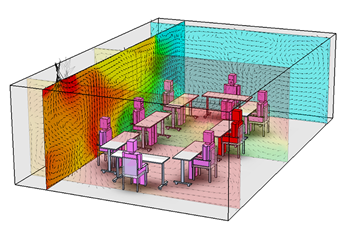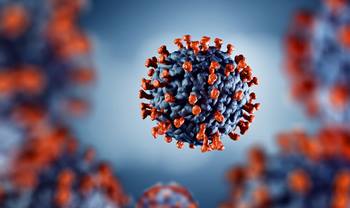Viral Fate and Transport Highlights
Combined highly instrumented and configurable facilities and computational capabilities to provide robust and quantitative information about how behavioral, environmental, and operational conditions affect the risk of airborne transmission in indoor spaces, such as classrooms, offices and conference rooms. This information can be used to mitigate the spread of viruses in enclosed spaces.

Designed new classes of antiviral materials with a low potential toxicity to humans, including composites of a transition metal oxide combined with a copper-based virucidal agent component that can adsorb SARS-CoV-2 virus and deactivate the pathogen. This research has examined binding of surrogate virus systems, as well as the SARS-CoV-2 spike protein, to non-biological surfaces using a range of imaging techniques available at DOE’s scientific user facilities.

Produced validated models for the fate and transport of SARS-CoV-2 in wastewater and groundwater arising from seepage of sewer water or septic tanks into groundwater and associated transport through the subsurface and potential exposure routes and risks to the population.


